

| Home | Log In | Register | Our Services | My Account | Contact | Help |
You are NOT currently logged in
dai oldenrich - 01 Sep 2006 13:32
click your browser refresh button to update charts
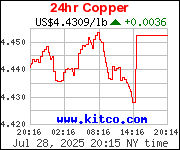
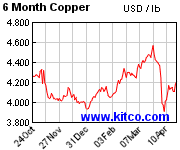
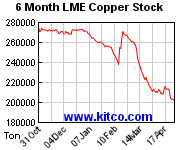
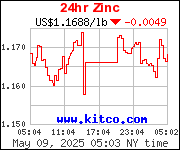
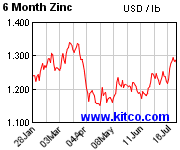
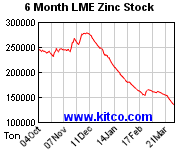
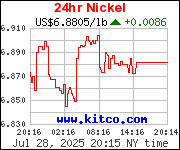
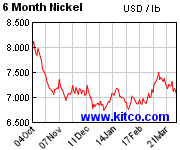
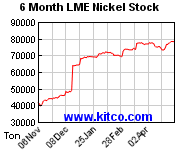
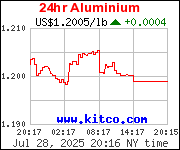
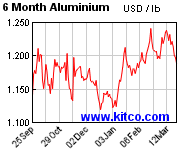
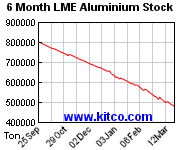
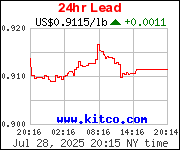
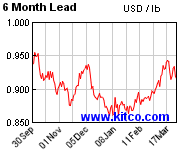
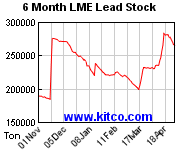
Also see: gold charts here silver charts here platinum charts here
dai oldenrich - 06 Sep 2006 21:51 - 19 of 181
Gold Falls in London, N.Y. as Gains May Have Been Exaggerated
By Pham-Duy Nguyen and Julie Tay
Sept. 6 (Bloomberg) -- Gold declined in London and New York as investors sold the precious metal on speculation gains in the past two weeks have been exaggerated.
The seven-day relative strength index of spot gold rose to 70 yesterday, a signal the metal may drop. Gold futures have had two straight weekly gains and yesterday rose the most in eight weeks in New York.
``With the market up $14 yesterday, there had to be a pullback today,'' said Mike Sander, a commodity broker at Altavest Worldwide Trading Inc. in Mission Viejo, California.
Gold futures for delivery in December dropped $2.50, or 0.4 percent, to $644.40 an ounce at 10:26 a.m. on the Comex division of the New York Mercantile Exchange. Bullion for immediate delivery in London fell $1.50, or 0.2 percent, to $636.80 an ounce at 3:26 p.m. local time.
The seven-day relative strength index on spot gold, a gauge of the momentum for the metal's gains or losses, rose above 70 yesterday for the first time since July 14. A reading above 70 indicates prices are poised to fall. The relative strength index for gold futures was 67 yesterday. Readings are derived from averaging gains or losses over seven days.
Central Bank Sales
Gold also fell on speculation central banks in Europe may sell the metal before a Sept. 26 deadline. Under an accord known as the Washington Agreement, European central banks agreed to limit sales to 500 tons a year. They haven't reached their target yet.
``People are watching closely'' to see if central banks are selling, said Matthew Turner, an analyst at Virtual Metals Consulting in London. ``Over the medium term, we expect gold to trade a little lower.''
The European Central Bank said two member banks last week sold gold worth 28 million euros ($35.8 million). Before yesterday, the banks had sold about 340 tons of the metal in the past year.
Gold may gain on speculation demand from jewelers and investors will recover this month. Gold has risen during every September since 2000 as jewelers stocked up on the metal for the winter holidays.
Jewelers, the biggest buyers of the metal, have slashed purchases for the first half of this year, according to the producer-funded World Gold Council.
``This is a time when gold seasonally goes higher,'' said John Licata, chief investment strategist at Blue Phoenix Inc., an energy and precious metals consulting firm in New York. ``You have money going back into the market that has been on the sidelines.''
Among other precious metals, platinum for October delivery dropped $2.50, or 0.2 percent, to $1,277 an ounce, after touching $1,281 yesterday, the highest since May.
Lonmin Plc, the world's third-largest platinum producer, said it may shut its refinery for five to seven days after a fire. The South African miner said the blaze may reduce its production forecast of 950,000 ounces to 960,000 ounces this year by as much as 2.6 percent.
dai oldenrich - 07 Sep 2006 06:42 - 20 of 181
dai oldenrich - 07 Sep 2006 06:45 - 21 of 181
Dow Jones - 6 September 2006
LME Review: Extends gains; fund buying, bullish sentiment
London Metal Exchange extended gains Wednesday on fund buying as bullish sentiment reasserted itself across the board, lifting copper prices to a fresh four-week high, traders said.
Other LME contracts also performed strongly, with systematic fund buying lifting LME three-month aluminium to a near-two month high of $2,643 a metric ton, up 2.4% on the previous PM kerb and above the the 100-day moving average.
"After a strong morning session holding gains, lead, aluminium and zinc attracted fresh fund buying," a trader said.
The end of the summer lull and expected rebound in industrial production during the fourth quarter have resulted in fresh investment inflows to the base metal market, analysts said.
Strength in the metal markets despite a falling oil market could indicate a shift within commodities away from "petroleum-based products and toward metals," HSBC analyst James Steel said.
"The relative size differences between the metals and oil means that even a modest reallocation out of energies and into metals can have a pronounced effect on the metals complex," he said.
For copper, supply issues continue to simmer just below the surface given that labor contract negotiations at the world's largest copper producer Codelco were just around the corner at the end of September, JP Morgan metal analyst Jon Bergtheil said.
Codelco produces around 12% of the world's copper.
"The strength in copper prices is reflective of tightening copper market fundamentals as we approach the end of the seasonal low-activity summer period and we believe that markets are underestimating the combined impact on copper supply of recent production losses and also expect a significant upturn in Chinese buying of copper to emerge before too long," Barclays Capital said in a report.
LME lead was the LME's strongest performer Wednesday, rising to a four-month high of $1,345/ton, up 4.8% after a break above $1,300 triggered technical buying, traders said.
A break above chart resistance for zinc produced similars results, pushing the metal to rose to a near four-month high of $3,715/ton, up 2.8%.
dai oldenrich - 07 Sep 2006 06:46 - 22 of 181
Copper Rises in Shanghai for 5th Day on Supply Concern in China
By Chia-Peck Wong
Sept. 7 (Bloomberg) -- Copper prices in Shanghai rose for the fifth straight day amid concerns that supply in China, the world's biggest user of the metal, may not be meeting demand.
Stockpiles monitored by the Shanghai Futures Exchange have fallen 17 percent this year as prices soared to records, prompting cable and wire makers to use more domestically- produced and scrap copper. The drop in inventories has led these buyers to return to the market, said trader Li Ling.
``Supply on the cash market is tightening, and there's a limit as to how much longer the buyers can rely on existing stockpiles,'' Li, a futures trader with Star Futures Co., said by phone from Shanghai today.
Copper for the most-actively traded delivery in November rose as much as 1,250 yuan, or 1.7 percent, to 75,200 yuan ($9,467) a metric ton on the Shanghai Futures Exchange. It traded at 74,860 yuan by the midday break.
The so-called front-month contract, for September delivery, traded at 75,030 yuan, signaling that immediate supply may not be able to meet demand.
Copper for immediate delivery in Changjiang, Shanghai's biggest spot market, rose as much as 1 percent today to 75,050 yuan a ton. Chinese users have to pay 17 percent value-added tax, 2 percent import tax, premiums and freight charges for imported copper.
``The strength in copper prices is reflective of tightening copper market fundamentals,'' Barclays Capital analysts led by Kevin Norrish said in a report yesterday.
``We believe that markets are underestimating the combined impact on copper supply of recent production losses and also expect a significant upturn in Chinese buying of copper to emerge,'' the analysts said.
Copper for three-month delivery rose $50, or 0.6 percent, to $8,090 a ton on the London Metal Exchange at 11:53 a.m. Shanghai time.
Metal for delivery in December rose 0.55 cent, or 0.2 percent, to $3.685 a pound on the Comex division of the New York Mercantile Exchange at 12:03 p.m. Shanghai time in after-hours trade.
dai oldenrich - 07 Sep 2006 06:49 - 23 of 181
www.voanews.com - 06 September 2006
IMF Warns Metals Prices Likely to Plummet - By Barry Wood
The International Monetary Fund, which on September 19 and 20 holds its annual meeting in Singapore, Wednesday released portions of its economic outlook at a briefing in Washington. While the IMF sees impressive overall growth continuing, it believes surging commodity prices will fall back.
Raghuram Rajan, the IMF's outgoing chief economist, says the world economy is in good shape but faces increasing risks of slowdown. In April the IMF slightly boosted its projections of world growth to 4.9 percent this year and 4.7 percent in 2007. In advance of its updated projections being released in two weeks, Rajan is optimistic.
"We now are in the fourth year of very strong world growth, growth that has been maintained in the face of headwinds, such as higher commodities prices, oil prices, and so on," said Raghuram Rajan.
Rajan, who later this year will return to his teaching position at the University of Chicago, says the prices of industrial metals have risen even faster than oil, which has more than doubled in the past three years. Metal prices, particularly copper, reached multi-year highs earlier this year before falling back sharply in May. Since then they have recovered most of their losses. Rajan believes metals prices are likely to fall.
"Our models, as well as futures prices, suggest that metals prices are likely to decline in the future," he said. "Non-oil, commodity dependent economies should anticipate this risk by being more cautious on expenditures that are hard to reverse, such as public sector salaries, and instead focus on expenditures that help build diversified productive capacity for the future."
dai oldenrich - 07 Sep 2006 06:49 - 24 of 181
MarketWatch - 6 September 2006
Gold loses $5 on strong dollar, lower oil prices
Gold futures closed with a loss of more than $5 an ounce Wednesday as dollar strength and renewed weakness in the oil market prompted traders to cash in on the metal's prior-day climb to a nearly one-month high
"Lower crude-oil values and a bouncy U.S. dollar dented bullion prices," said Jon Nadler, an investment products analyst at bullion dealers Kitco.com.
Gold for December delivery finished the day down $5.10, or 0.8%, at $641.80 an ounce on the New York Mercantile Exchange.
The contract closed at an almost four-week high near $647 Tuesday, buoyed by physical demand as the Asian jewelry season approaches. That trend should continue in the coming weeks, according to James Moore, analyst at TheBullionDesk.com.
"While the combination of firmer dollar/softer oil have the potential to trigger profit taking, the recent pick-up in physical, investor and fund interest, coupled with more fundamental issues such as low mining output, should see gold test back towards $650-$655 and our year-end target of $700 an ounce," he said in a note to clients.
"The season of gold is underway," said Julian Phillips, an analyst at GoldForecaster.com, and the Indian market has been "good buyers of gold as the price has remained stable."
But what gold needs most is "that steady flow of tonnage into baubles a flow that accounts for more ounces of gold than all of the mines can normally produce, year on year," according to Nadler.
Key Indian and Chinese buyers will "consume" gold as the "giving season approaches, but only if they deem that prices will not head significantly lower," he said.
Given that, he warned that "cautious optimism would be preferable at the moment, not irrational exuberance."
Strength in the dollar put some pressure on the precious metal's prices Wednesday, with the greenback climbing against its major foreign-exchange counterparts after a U.S. government report showed accelerating wage inflation.
Revisions to quarterly nonfarm business productivity data show unit labor costs rose 5% in the past year, the fastest pace since 1990, the Labor Department reported.
Against this backdrop, December silver closed up 6 cents at $13.20 an ounce, logging its strongest close since May 23. October platinum closed down $4.50 at $1,275 an ounce while December palladium rose $4.15 to close at $359.55 an ounce. December copper ended at $3.6795 a pound, up 5.5 cents, or 1.5%.
On the supply side, gold inventories were down 47,934 troy ounces at 7.93 million as of Tuesday evening, according to Nymex data. Silver inventories were unchanged at 104.2 million troy ounces, while copper supplies fell by 246 short tons to 11,542 short tons.
dai oldenrich - 07 Sep 2006 06:49 - 25 of 181
Gold in Asia Falls on Concern Federal Reserve May Raise Rates
By Feiwen Rong
Sept. 7 (Bloomberg) -- Gold in Asia fell on concern the Federal Reserve may raise interest rates to curb inflation, reducing the metal's appeal as an alternate investment.
Labor costs in the U.S. rose at a 4.9 percent pace in the second quarter after gaining 9 percent in the previous three months, a government report yesterday showed, the biggest back- to-back increase since 2000. Rising interest rates boost the appeal of the dollar and pressure the dollar-denominated gold.
``This is so-called 'second-round effects' where people may increase their wage demand because of inflation concern and that leads into inflation,'' Andrew Harrington, an analyst at Australia and New Zealand Banking Group Ltd., said from Sydney. ``If the Fed raises rates, one would probably see slowing economies, decreasing risks of inflation and a stronger U.S. dollar, all three of which will impact the gold price downwards.''
Gold for immediate delivery fell as much as $1.50, or 0.2 percent, to $632.20 an ounce, and traded at 632.92 at 12:05 p.m. Singapore time. The metal fell 0.7 percent yesterday.
Gold for December delivery fell as much as $2.10, or 0.3 percent, to $639.70 an ounce on the Comex division of the New York Mercantile Exchange. The contract traded at $640.50 at 12:03 p.m. Singapore time.
A futures contract is an obligation to buy or sell a commodity at a set price for delivery by a specific date.
Jeweler Demand
Gold also fell on speculation jewelers may delay buying the metal on expectations prices may extend declines amid talk central banks in Europe may conduct sales before a Sept. 26 deadline.
Jewelers, the biggest buyers of the metal, have slashed purchases for the first half of this year, according to the producer-funded World Gold Council. Gold has gained every September since 2000, partly because jewelers stock up for the Indian wedding season.
``There are also reports saying that Indian jewelers' demand is 50 percent of the usual amount this time of year when they normally build up inventories in preparation for the upcoming festival season,'' the bank's Harrington said. ``There's an expectation that prices may come down and they are delaying purchases and inventory buildup.''
Under an accord known as the Washington Agreement, European central banks agree to limit sales to 500 tons a year. They have only sold around 340 tons by Sept. 1, according to analysts at Barclays Capital who estimated the amount in a report yesterday.
dai oldenrich - 08 Sep 2006 06:43 - 26 of 181
Sept. 8 (Bloomberg)
The price of copper used to make wires and pipes may resume rising as output disruptions may cut supply, he said.
Workers at BHP Billiton Ltd.'s Spence copper mine in Chile are expected to vote Sept. 15 to strike. An almost four-week stoppage at BHP's Escondida mine in Chile that cut copper output by about 45,000 tons ended Sept. 2.
A strike at Spence will postpone the start of copper production at the mine, scheduled for October, Andres Ramirez, president of the union at Spence, said yesterday from the Chilean city of Antofagasta.
dai oldenrich - 08 Sep 2006 07:17 - 27 of 181
BHP Billiton's Union at Spence Expects to Reject Wage Offer
By Heather Walsh
(Bloomberg) -- BHP Billiton's union at its Spence copper mine in Chile expects to vote next week to strike, saying that the company refuses to meet its demands for wage increases.
The union plans to vote on Sept. 15 to reject a company wage offer to increase salaries to keep pace with inflation, said Andres Ramirez, president of the union, which wants salaries to rise by 7 percentage points above inflation.
``We aren't asking for anything out of this world,'' Ramirez said in an interview from the Chilean city of Antofagasta. ``They are pushing us to a strike.''
A strike would postpone the start of copper production at the mine, scheduled for October, Ramirez said. The wage dispute would be the second this month in Chile for BHP Billiton, the world's largest mining company. A union at Escondida, the world's biggest copper mine, returned to work Sept. 2 following an almost four-week strike that halved the mine's output and led to a loss of about 45,000 metric tons of copper production.
Mauro Valdes, a spokesman for BHP Billiton in Santiago, today declined to comment on whether a strike at Spence would postpone production.
Workers at Spence earn on average between 350,000 pesos ($647) and 400,000 pesos per month, less than the average for Chilean miners, Ramirez said. He said workers also want to the company to share its profit after prices for copper jumped 70 percent this year.
BHP Billiton, along with Codelco, the world's biggest copper supplier, and Falconbridge Ltd. will negotiate additional wage packages this year or in 2007 with unions at mines in Chile. The country produces 36 percent of the world's copper.
dai oldenrich - 08 Sep 2006 07:19 - 28 of 181
Engineering News
Miner predicts big zinc shortfall
ASX-listed Mount Burgess Mining said that world zinc output would have to grow by 22% on this year's production estimate of 10,6-million tons to meet expected demand by 2010.
Speaking an African-focused mining conference in Perth, on Thursday, chairperson Nigel Forrester said that new mine start-ups, production upgrades and mine closures would have to fill the expected shortfall of 2,38-million tons.
He said that China would remain the driver for higher zinc production globally.
"If China increases consumption by an average 345 000 t/y to 4,8-million tons total by 2010, and the rest of the world increases consumption by a modest 2%, total world production within three years must reach 13-million tonnes," Forrester said.
Forrester said that stocks and output would be at critical levels by early in 2008.
"The decline has been evident over recent years with London Metals Exchange stocks of 780 000 tons in April 2004 dwindling 606 500 tons in just 27 months to 173 500 tons by just a few weeks ago."
He said it represented an average daily decrease of 728 t/d over the 27 months and that it would worsen to 907 t/d this year.
dai oldenrich - 08 Sep 2006 07:21 - 29 of 181
Dow Jones Newswires - Friday, September 08, 2006
Copper May Rise On Restocking, Strikes - World Bank
0115 GMT [Dow Jones] Copper prices could rise on reemergence of strong Chinese demand after now-complete period of de-stocking, says World Bank in monthly commodity review. Notes global stocks of red metal remain critically low and after 25-day strike at world's largest copper mine, Escondida in Chile, "other labor contracts in Chile and Canada expire this year which could prop up prices." LME 3-month copper last at $8,030/ton, up $20 vs London PM. (JAD)
dai oldenrich - 09 Sep 2006 06:35 - 30 of 181
8 Sept 2006 - Bloomberg - By Chanyaporn Chanjaroen and Dale Crofts
Mine Strikes
A decline in copper prices may be limited by speculation that unionized workers at BHP Billiton Ltd.'s Spence mine in Chile will strike next week, cutting supply.
Workers will probably vote in favor of a stoppage on Sept. 15 to demand higher wages, Andres Ramirez, president of the union, said yesterday in Antofagasta, Chile. A 25-day strike at BHP's Escondida mine in Chile cut output in half at the world's largest copper mine. The walkout ended Sept. 2.
A strike at Spence ``would add to the tightness in copper,'' Neil Buxton, managing director of London-based GFMS Metals Consulting Ltd., said today by phone. Strikes are ``a reason why copper prices will stay at high levels.''
Eight of 16 analysts, investors, traders and consumers surveyed by Bloomberg News today forecast copper will rise next week for a fourth consecutive week. Four expected a drop and four predicted little change.
Copper stockpiles monitored by the LME fell 2,525 tons, or 2 percent, to 125,150 tons, the exchange said. That's less than three days of global consumption.
``Copper is still pretty well supported,'' said Donald Selkin, director of equity research at Joseph Stevens & Co. in New York. ``There is some tightness.''
dai oldenrich - 09 Sep 2006 06:36 - 31 of 181
Source: AFP - September 9
BHP faces second Chile strike threat
Anglo-Australian mining group BHP Billiton says it has made an offer to workers at its Spence copper mine in Chile in a bid to avoid another damaging strike.
Last month, protesting workers at its Escondida copper mine in Chile crippled production during a 25-day strike over pay.
"We did table an offer to the union yesterday," a BHP spokesman said in London.
"It's a very reasonable offer, given the stage of the project and the experience of the team."
The company has declined to detail the wage proposal.
BHP has invested about $1 billion in the Spence mine in northern Chile, which is due to start production next month at the earliest, with a capacity of 200,000 tonnes of copper cathode per year.
The company faces wage demands from its highly unionised work force, which is seeking a 7 per cent pay increase, according to Chilean news reports.
BHP, which bought the mine in 2000, says it has yet to receive the union's response to the offer.
Media reports in Chile say workers are not happy with the proposed package, which is below their wage hike demands.
The union reportedly rejected the offer and will vote on September 15 on whether to proceed with a strike.
The strike at Escondida, the world's largest copper mine, ended last week after BHP and the union agreed to a 40-month contract, which included a 5 per cent wage rise and one-time bonus of about $21,000 for each worker.
The strike was an effort by the workers to secure a greater share of the mine's profits, which have surged in line with a near-tripling of copper prices in the last three years.
BHP, the world's largest miner, posted a record annual net profit of $13.9 billion in August and said prospects were good for the sector amid unprecedented global demand for commodities.
The international credit ratings agency Fitch Ratings had warned in a report published on August 24 that the Escondida strike could spark copycat action across the globe as miners seek a bigger share of their employers' record earnings.
dai oldenrich - 09 Sep 2006 06:37 - 32 of 181
Saturday September 9
Chile hard-pressed to avert more copper strikes - By Pav Jordan
SANTIAGO, Chile, Sept 8 (Reuters) - Chile's government would likely pay a high political price if negotiators fail to cut a deal with thousands of union workers at state-owned Codelco, the world's largest copper-producing company.
Codelco faces contract negotiations at three divisions before the end of the year, and must reach deals with some 7,000 workers to avert a strike.
A work stoppage by the biggest union in the country could rattle confidence in the center-left administration of Chile's first woman president, Michelle Bachelet.
"I don't envy Codelco's negotiators, because I think they have a very difficult task before them," said Joseph Ramos, an analyst and economy professor at the University of Chile in Santiago.
"If this bubbles (into a strike) it will work against the government because the public will interpret it as a failure of the government to achieve its goals."
The negotiations follow an intense, nearly month-long strike at Chile's Escondida, the world's largest copper mine, by 2,052 workers demanding higher salaries and benefits.
In negotiations with workers, Codelco must juggle the need to protect profits that go directly to the state, and workers' rights to share in booming copper revenue.
Chile is the world's largest producer of copper, and profit from the red metal is the backbone of the local economy.
"Everything the workers win from these negotiations comes out of the pockets of Chileans," Ramos said.
MORE EQUALITY ACROSS THE BOARD
The copper market has zoomed to record heights over the past three years -- jumping nearly fivefold -- and will likely stay strong until the end of the decade at least.
Copper revenues have helped Chile become one of the region's healthiest economies, and Bachelet's government says some of the windfall must be set aside for leaner times.
For many the debate runs deeper than dollars and cents and is more about equality in a democratic Chile that is barely a generation out of the 1973-1990 military dictatorship.
Chile's Mining and Energy Minister Karen Poniachik said last week the Codelco talks should not be turned into a political issue.
But Fabian Pressacco, a political science professor at the Alberto Hurtado University in Santiago, said the subject is political by nature because it touches on campaign promises by Bachelet to improve the lives of average Chileans.
"And Chileans are demanding more equality across the board, between men and women, between bosses and employees," Pressacco said.
GOVERNMENT, ESCONDIDA DENY PRESSURE
At Escondida last week, workers approved a new 40-month contract for a 5 percent wage hike and a special bonus equal to some $17,000 per worker, compared to initial demands for a 13 percent raise and a $30,000 bonus.
Escondida union chief Luis Troncoso said the government intervened in the Escondida strike by urging the company not to give in too much to the union, and pushed the union to be more flexible in its demands.
"There was pressure (on Escondida) from the government not to make the best offer, because of serious upcoming negotiations at Codelco," Troncoso said.
The government and Escondida, majority-owned by global miner BHP Billiton , said there was no pressure.
From October to December, the three divisions at Codelco responsible for some 1.3 million tonnes of copper output will negotiate new three-year contracts.
"Negotiations must reflect the market, as it is and as it will be for the 36 months of the (next) contract," said Raimundo Espinoza, president of Codelco's 14,000-strong copper union and who is also on the Codelco board.
dai oldenrich - 18 Sep 2006 07:00 - 33 of 181
Monday, September 18, 2006 - Dow Jones Newswires
Gold May Recover On IMF Rebuke
Gold's almost 2-week retreat expected to find floor from which to stage some kind of recovery later this week on anticipated scathing IMF statement on various economies frittering away opportunity to rectify imbalances while global growth still strong, says Westpac Australia chief currency strategist Robert Rennie; "that should bode well for USD alternatives and it should see a bit more stability coming back into gold through the week." Adds extent of recovery depends largely on physical demand. But for now views gold as paying price for overly pessimistic view on U.S. economy, dollar. Spot trades last $581.10/oz, up $3.15 on NY close, but down from $640 early this month.(JAD)
dai oldenrich - 18 Sep 2006 07:01 - 34 of 181
Sep 17, 2006 (The Australian Financial Review - ABIX via COMTEX)
Citigroup, JPMorgan and JBWere analysts are among those recommending base metals in September 2006. Although there was a sharp fall in commodity prices and resources stocks in the week ending 15 September 2006, many analysts argue that the fall reflected sentiment more so than fundamentals. There are differences between the recommendations of investment houses, such as Citigroup reducing aluminium forecasts while raising zinc, nickel and copper forecasts. Predictions about supply and demand are also influencing forecasts, especially with zinc.
dai oldenrich - 18 Sep 2006 07:04 - 35 of 181
Sept. 18 (Bloomberg)
Shanghai Copper Futures Increase on Supply Concern in China - By Helen Yuan
Copper in Shanghai rose on concern supplies won't be enough to meet demand in China, the world's biggest consumer of the metal used in power cables and plumbing.
Copper for November delivery on the Shanghai Futures Exchange rose as much as 990 yuan, or 1.4 percent, to 69,630 yuan ($8,766) a metric ton, and traded at 69,440 yuan at 11:30 midday break. The contract fell 7.4 percent last week.
Copper for immediately delivery in Changjiang, Shanghai's biggest copper market, rose as much as 0.6 percent to 70,150 yuan a ton. Chinese users have to pay 17 percent value-added tax, 2 percent import tax, premiums and freight charges for imported copper.
Copper for three-month delivery rose as much as $130, or 1.8 percent to $7,400 a ton on the London Metals Exchange and traded at $7,390 at 11:51 a.m. Shanghai time.
Copper for delivery in December increased 3.85 cent, or 1.2 percent, to $3.3500 a pound on the Comex division of the New York Mercantile Exchange at 11:25 a.m. Shanghai time in after- hours trading.
dai oldenrich - 20 Sep 2006 07:54 - 36 of 181
Wed 20 Sep 2006
Oil marks biggest 1-day decline in 10 years
LONDON (SHARECAST) - Oil prices continued its sharp decline, marking its biggest drop in over ten years on Tuesday amid strong supplies and as concern over problems in the Middle East ease.
US light crude oil for October delivery dropped $2.14 to settle at $61.66 a barrel on the New York Mercantile Exchange.
Oil prices have sunk more than 20% in the last two months, from its high in mid July, as the market cheers rising US inventories.
The latest government data showed crude inventories in the US are around 6% higher than a year ago.
Among precious metals COMEX gold for December delivery fell $9.60 to $583.20 an ounce ahead of this week's US Federal Reserve meeting.
Silver tracked the yellow metals decline, marking a 2.9% slide. Its safe haven qualities failed to come in demand despite the staging of a military coup in Bangkok.
Platinum and palladium also fell on Tuesday.
dai oldenrich - 20 Sep 2006 07:57 - 37 of 181
Copper Falls on Concern U.S. Housing Slowdown May Curb Growth
By Xiao Yu
Sept. 20 (Bloomberg) -- Copper prices fell in London and Shanghai after a U.S. report showed housing construction dropped to a three-year low last month, indicating economic expansion is slowing and demand for the metal may decline.
Housing starts in the U.S. plunged 6 percent last month to an annual rate of 1.665 million, the Commerce Department said yesterday, a steeper slide than economists had estimated. The average home in the U.S., the world's biggest copper user after China, contains about 400 pounds of copper.
``We are concerned the U.S. economy is lacking momentum for growth as the real estate market has been a key supporter of the economy,'' Wang Zheng, a Shanghai-based trader with Dalu Futures Co. said by phone today. ``Slowing economic growth may prompt hedge funds and other investors to short copper.''
Copper for November delivery on the Shanghai exchange fell as much as 2,050 yuan, or 2.9 percent, to 68,920 ($8,692) yuan a metric ton. The contract traded at 69,120 yuan a ton at 11:05 a.m. local time.
Copper for delivery in three months on the London Metal Exchange dropped $135, or 1.8 percent, to $7,360 a ton as of 10:52 a.m. Shanghai time.
Copper has dropped almost 20 percent from a record $8,800 on May 11. The world's economy ``may be turning'' down, International Monetary Fund Managing Director Rodrigo de Rato said yesterday in Singapore. The IMF last week said the strongest economic expansion in three decades will cool next year.
Short Positions
Hedge-fund managers and other large speculators increased their net-short position in New York copper futures in the week ended Sep. 12, the U.S. Commodity Futures Trading Commission data showed on Sept. 16.
Speculative short positions, or bets prices will fall, exceeded long positions by 9,394 contracts on the Comex division of the New York Mercantile Exchange, the Washington-based commission said in its Commitments of Traders report. Net-short positions rose by 671 contracts, or 8 percent, from a week ago.
``There are very divided views on copper prices -- on the one hand, we see signs of a slowing economy; on the other hand, we see supply disruptions of major copper mines worldwide and sound demand in China,'' Dalu's Wang said.
Copper in Shanghai have been risen in the past two days as cable and electric wire producers began to store the metal so they are able to maintain output during a weeklong national holiday next week, traders including Li Ling said yesterday.
dai oldenrich - 20 Sep 2006 07:58 - 38 of 181
FT - By Kevin Morrison - September 18 2006
Investors pull out of commodities
Up to $12bn may have been taken out of commodities by investors over the past month, JPMorgan said on Monday.
The outflows came amid a retreat in commodity prices as concerns increased about a slowing US economy and the knock-on effect of easing demand for raw materials.
ADVERTISEMENT
The investment bank said the gold price could be the most vulnerable to further selling, while crude oil prices were showing signs of support at current levels.
John Normand, global currency, commodity and fixed-income strategist at JPMorgan, said the $12bn of outflows was small relative to the total inflows into commodity index products over the past five years about $100bn.
But he said it was high relative to the amount that had entered through retail mutual funds this year $19bn, according to JPMorgans internal database of about 250 funds.
JPMorgan said about $4.7bn has been sold by speculative investors in crude futures since May, and about $4bn in US gold futures over the same period.
The estimates are based on speculative investment activity measured in the weekly Commitment of Traders report, released by the Commodity Futures Trade Commission, the US regulator. Retail investor activity reflects the assets under management in various commodity-backed ex-change traded funds, it said.
From its peak early last month to its recent trough on Thursday, Brent crude futures tumbled more than 21 per cent, US natural gas has fallen to two-year lows, gold hit a three-month low last week and copper has fallen about 10 per cent in the past month.
The most popular commodity index product, Goldman Sachs Commodity Index, is down this year, in spite of a rise in underlying commodity prices.
An attraction for investors in indices is the ability to earn a roll yield from futures prices being lower than the prevailing spot, or current, price. Investors tend to roll their index trade over each month, just ahead of expiry of the contract.
Traditionally, this trade has been profitable, with investors selling at a higher price and buying at a lower price on the roll. But the roll yield has disappeared in energy futures.
The collapse in commodity prices over the past six weeks has raised the fear of more sustained liquidations, given the sizeable new money flow into this market over the past five years and the negative roll on index products, said Mr Normand.